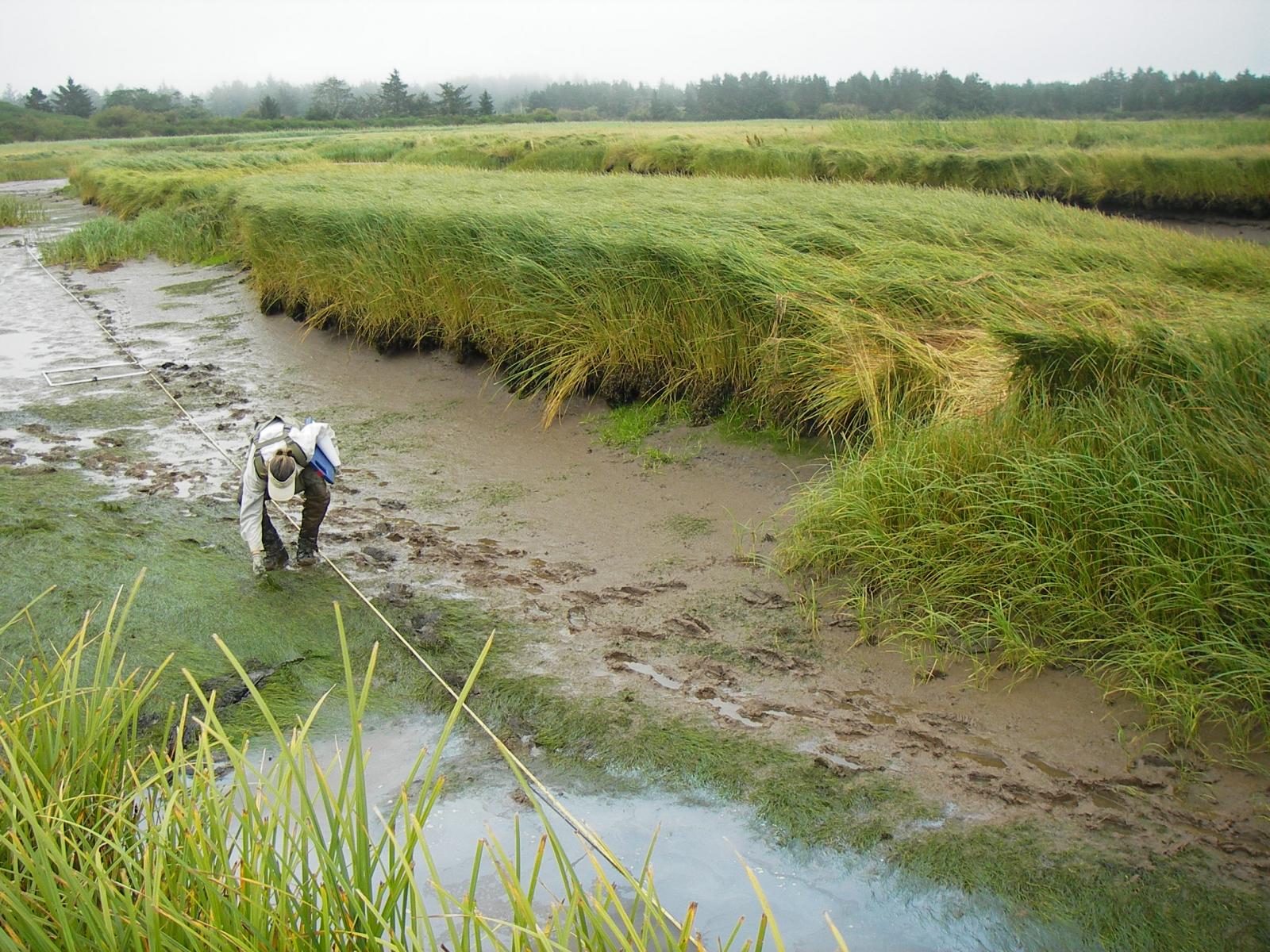Study Shows Coastal Wetlands Aid in Carbon Sequestration
Sea-level rise impacts will likely decrease ecosystem carbon stocks

PNNL scientist, Amy Borde collects data in a marsh on the Columbia River estuary.
Photo: Heida Diefenderfer
Tidal marshes, seagrass beds, and tidal forests are exceptional at absorbing and storing carbon. They are referred to as total ecosystem carbon stocks, yet little data exists quantifying how much carbon is absorbed and stored by tidal wetlands in the Pacific Northwest (PNW). Knowing this information is valuable, particularly in the context of sea level rise and with the associated need for Earth system modeling to predict changes at the coast.
The Science
Researchers found that the average total ecosystem carbon stock in the PNW is higher than in other areas of the U.S. and other parts of the world. Marsh carbon stocks, in particular, are twice the global average. Researchers found progressive increases in total ecosystem carbon stocks along the elevation gradient of coastal wetland types common in the PNW: seagrass, low marshes, high marshes, and tidal forests. Total carbon also increased along the salinity gradient, with more carbon occurring in lower salinity areas.
Additionally, this research showed that common methods used to estimate soil carbon actually underestimate soil carbon stocks in coastal wetlands. Soil carbon storage below the depth of 100 centimeters proved to be an important carbon pool in PNW tidal wetlands.
The Impact
The results suggest that long-term sea-level rise impacts, such as tidal inundation and increased soil salinity, will likely decrease ecosystem carbon stocks. This is a concern if wetlands can’t migrate with increased sea level due to being bound by topography and human development.
Summary
This research arose from the Pacific Northwest Blue Carbon Working Group, of which Amy Borde and Heida Diefenderfer of Pacific Northwest National Laboratory’s Coastal Sciences Division are members. The team studied 28 tidal ecosystems across the PNW coast, from Humboldt Bay, California, to Padilla Bay, Washington. They sampled common coastal wetland types that occur along broad gradients of elevation, salinity, and tidal influences, collecting the data necessary to calculate total carbon stocks in both above ground biomass and the soil profile.
In three years of study, the researchers found that most carbon is in the wetland soils not aboveground, and much of it is deeper than one meter—a typical lower limit of sampling. Total ecosystem carbon stocks progressively increased along the terrestrial-aquatic gradient of coastal wetland ecosystems common in the temperate zone including seagrass, low marshes, high marshes, and tidal forests. The findings were reported in “Total Ecosystem Carbon Stocks at the Marine-Terrestrial Interface: Blue Carbon of the Pacific Northwest Coast, USA,” published in the August 2020 online edition of Global Change Biology (DOI: 10.1111/gcb.15248).
Research Team: PNNL’s Amy Borde and Heida Diefenderfer, along with J. Boone Kauffman, Leila Giovanonni, James Kelly, Nicholas Dunstan, and Christopher Janousek (Oregon State University); Craig Cornu and Laura Brophy (Institute for Applied Ecology/Estuary Technical Group); and Jude Apple (Padilla Bay National Estuarine Research Reserve).
Funding
The grant award was administered by the Institute of Applied Ecology, and other partners included Oregon State University and the Padilla Bay National Estuarine Research Reserve. This research was supported by the National Oceanic and Atmospheric Administration, through a cooperative agreement with the University of Michigan.
Published: August 13, 2020
Kauffman, J Boone, Leila Giovanonni, James Kelly, Nicholas Dunstan, Amy Borde, Heida Diefenderfer, Craig Cornu, Christopher Janousek, Jude Apple, and Laura Brophy. “Total Ecosystem Carbon Stocks at the Marine‐terrestrial Interface: Blue Carbon of the Pacific Northwest Coast, United States.” Global change biology, no. 0 (August 11, 2020). DOI: 10.1111/GCB.15248